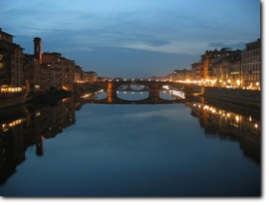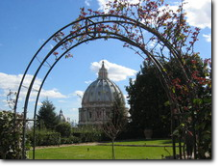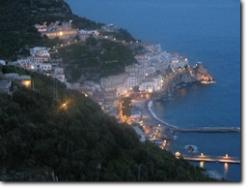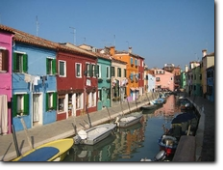Etruscan Travels | The Etruscans | Tuscia | The Etruscan Civilization | Excursions to the Tuscia - Rome Travels | Home | Rome Guide | Rome Tours | Rome Travel | Religious Holidays | Italy Pilgrimages | Italy Shore Excursions




Main menu:
Etruscan Travels | The Etruscans | Tuscia | The Etruscan Civilization | Excursions to the Tuscia
LAZIO: The Land of The Etruscans -
Tuscia - Province of Viterbo
Tuscia is the name of Southern Etruria and it is comprised in the Province of Viterbo, 90 km (60 miles) North of Rome. Its territory preserve amazing aspects and remains of the greatest civilization ever existed in Italy before the Ancient Romans complitely submitted and absorbed them only in IInd Cent. B.C.
The Etruscan area in Lazio Region includes Viterbo, the Maremma Area, the Area of Lake Bolsena, the Tiber Valley, the Cimini Mountains, the Valleys of Treja and Mignone. Most of the people think that the Etruscans were mainly established in Tuscany. It's false. They were mainly based in this area, the Tuscia.
Why having an excursion in the TUSCIA Area ?
Rome Travels wants to promote the tourism and several jouneys in this incredible portion of the Lazio Region where in most of the cases the areas seem to be timeless. A territory where culture is surrounded by Etruscan Art, stupendous views and hospital people.
Your Etruscan discovery will be enriched by excellent food, the Tuscia area produces among the best Italian Olive Oil (see later at the end of the page) and where people can really experience the authentic spirit of the past traditions still immaculated in the little hidden villages and towns of three thousands years of history.
See here a map of the Etruscan sites in Lazio Region (Low Resolution, 111 kb) - High Resolution, click here
NOTE on payments:
To confirm any tour, we require either a deposit or full prepayment by Visa-MasterCard + 20% VAT on top.
In case you wish to pay the deposit, it will be charged at cost + 20% VAT and then the balance by cash to your assigned tour guide. The amount of the deposit depends on which kind of tour is selected.
NOTE: What we included in the current web page dedicated to the Etruscan Sites of the province of Viterbo ( Tuscia ) ?
Because of the enourmous cultural, religious, architectural and archaelogical heritage of the Province of Viterbo, mainly due to over 30 Etruscan towns & necropolis, we needed to select some of them. Then, including the remains of the Roman period, the great art expressed in the Middle Ages - unlike Rome - due to the Feudal Landlords and the vestige of the great Families in the Renaisance period, we did a further selection. At the end, this selection was based not only on the most significant sites that influenced the Roman civilization, but mainly upon an easy "travel" and journey of the beauties of the Lazio Region. We apologize if we did not include or mention any or part of the minor centres.
VITERBO
We want to start our touristic promotion of the Tuscia by the main city of the Province, Viterbo (Vetus Urbs - Old City).
Many people -even in Italy - think of Viterbo exclusively as the town that housed the Popes in the Middle Ages and that many of them were elected in their Palace in Viterbo when the Sistine Chapel in the Vatican was not created yet. On the other hand, Viterbo has remarkable Etruscan Sites just outside town (Ferento and Aque Passeris).
Municipality of Viterbo
Official Website
Province of Viterbo
Official Website
A classical visit of Viterbo may include the City Walls, the Medieval Burg of San Pellegrino, symbol of the city, the district of Piano Scarano, the Cathedral of St. Lawrence, the Palace of the Popes (Palazzo dei Papi) other than its unique Thermal Spa - Baths (Terme dei Papi).
We would need to stop briefly to see the Sanctuary of Santa Rosa (Patron Sainte), the Albornoz Fortress, the Palazzo dei Priori and its Civic Museum with many artefacts found in the Etruscan tombs, Etruscan rings, Etruscan earrings, vases, terracotta sarcophagi, etc.
As accomodation and base for any excursion in this area, we suggest to stay in one Viterbo Hotel.
TOURING Around VITERBO - Suggested trips in the area among Castles, Medieval Burgs, Renaissance Villas and Abbeys
Castello di Montecalvello: it's older than the annexed Medieval Burg (1172), built by the last Longobard King, Desiderio, around 775 A.D.
- Villa LANTE in Bagnaia: coupled with the Park of the Monstersin Bomarzo and the Palazzo Farnese in Caprarola along with its Gardens, it is the most outstanding late Renaissnce Villa in the Province of Viterbo: Italian gardens and fountains.
- San Martino al Cimino: the Cistercian Abbey (1150) and the Palazzo Doria-Pamphilj (1650)
- Sanctuary of Santa Maria della Quercia (1400)
HIDDEN TREASURE: see our page dedicated to the Ancient City of SUTRI - Etruscan, Roman, Esoteric, Charle Magne, Papal Residence, Food & Wine, a wonderful surprise located only half hour from Rome.
Barbarano Romano and Blera
Barbarano Romano, ancient Etruscan site upon a hill, is within the Suburban Park of Marturatum (3000 acres), created with the purpose of saving the archaeological (i.e. Etruscan Necropolis) and Architectural (i.e. Medieval Castle with three different City Walls) of the area. To see: The San Giuliano Necropolis and the "Antiquarium" of Etruscan collection housed in the Town Hall.
Blera is also located on the top of a hill made of tufa (volcanic stone) and, like Barbarano, has origin in the VII Cent. B.C. The added value of the area is its Etruscan Tombs and the local industries of sublime Extra Vergin Olive Oil (see later the section dedicated to the Etruscan Olive Oil). To see: The Necropolis and The Municipal Museum Gustaf VI Adolf from Sweden.
BOLSENA: The Lake of the Etruscans
The best way to experience a route connecting the most important Etruscan places around the Bolsena Lake is to visit first the Etruscan-Roman town of Volsinii. Volsinii was founded after the destruction of Velzna, the present Orvieto, carried out by the Romans in 265 B.C. together with the deportation of all its inhabitants to the Volsini Mountains. To see: the Monaldeschi Fortress and the Bolsena Lake Territorial Museum which is full of Etruscan and Roman remains.
Circumnavigating the Lake Bolsena, N-W from the Lake there is Grotte di Castro where in locality Pianezze there is an interesting Etruscan Necropolis with a free access to the "Red" Tomb.
Following South the Lake Bolsena, we will meet three immaculated towns: Bisenzio, Capodimonte and Marta, the latter named after the Marta River. During the Etruscan period, the Marta river valley was a main line of communication between the lake and the Tyrrhenian coast, including the two Etruscan gems, the towns of Tarquinia and Tuscania.
CIVITA CASTELLANA
Originally called Falerii Veteres (Old Falerii), founded by the Faliscans, a population of Italic origin, they used a language which was quite similar to the Roman Latin, showing also a high level of civilization. Falerii Veteres was destroyed by the Romans in 241 B.C. and the town was rebuilt nearby, Falerii Novi (New).
What to see: the Museum of "Agro Falisco" housed in the XVIth Cent. Borgia fortress can't be missed. Today in Civita Castellana is one of the few Italian places declared "The City of the Ceramic" and are made some of the greatest potteries Italy.
Calcata
Not too far away from Civita Castellana, its story reminds the one of Civita di Bagnoregio. Calcata is just a very small village of Middle ages built upon a volcanic cliff populated today by local artists.
This trend has continued so that today that town boasts a thriving artistic community described in the New York Times as what "may be the grooviest village in Italy, home to a wacky community of about 100 artists, bohemians, aging hippies and New Age types." See a great picture of Calcata on the tufa cliffs here.
TUSCANIA
The first settlements of Tuscania date back to Protovillanovan period (1150-1000 B.C.). Pliny the Elder was the first to refere to the local people as "Tuscanienses". The rich Etruscan Necropolis of Madonna dell'Olivo, Pian di Mola, Peschiera, Castelluccia, Scalette, Sasso Pizuto and Ara del Tufo show us the evidence of the area's flourishing economy and advance civilization, due also to its strategic location. In fact, the original town is to be found in today's the Hill of San Pietro, as one of the most important crossroads of the inner Etruria. From Rome, connected with Vulci and Saturnia through the Via Clodia (IIIrd-IInd Cent. B.C.).
According to the legend, Tuscania was founded by Aeneas' son, Ascanius, where he had found twelve dog pups (whence the Etruscan name Tus-Cana, cana begin similar to Latin canis for "dog"). Another legend attributes the foundation to one Tusco, son of Hercules and Araxes.
Tuscania retains most of its medieval walls and several towers protecting the palaces of the most important families. Even some of the bell towers have the appearance of a military building. To see is the Archaeological Museum located in the former Convent of St. Francis (Etruscan pottery), The Queen's Tomb, the Romanic Churches of San Pietro and Santa Maria Maggiore.
Italy Tours and Travel
Latium Region
Sutri
Naples Italy
Capri
The Amalfi Coast
Pompeii and Herculaneum
Oplontis, Boscoreale and Stabiae
Shore Excursion to the Bay of Naples
About Us
Links
The Queens of the Etruscan Culture: TARQUINIA, VEIO and VULCI
TARQUINIA
Tarquinia is one of the oldest cities belonging to the Etruscan League (VIII Cent. B.C.). Several Etruscan tribes gathered and founded a big urban centre whose fundations can be seen today in the ancient Sanctuary called Ara della Regina ("Altar of the Queen"). Defeated by the Romans in 311 B.C., due to its loyalty to the Eternal City became an independent municipality. Here have been found great pieces of Etruscan jewerly.
Taquinia became the capital of the Etruscan Frescoes and its Necropolis has been selected by the UNESCO as World Heritage Site. To see: The National Museum and the Etruscan Necropolis.
Tarquinia: the Capital of the Fresco Decorations
The Largest Painting Gallery in the Pre-Roman World
The customs of ornating their burial chambers with fresco painting is evedent in several Etruscan towns but is only in Tarquinia that the phenomenon takes on such vaste dimensions for so long period of time (VIII through the III Cent. B.C.). The painted tombs are in any case a very, very small part of the sepulchrums in Tarquinia (about 3%!) expression of the few aristocrats that could afford such a sumptuous tombs.
The types of paintings in their tombs show us the Etruscan conception of everyday life of the aristocracy and the theme of the death. The latter was that the deceased kept living in the place where the body was laid to rest.
VEIO
Veio was undoubtful the most powerful Etruscan city, located just few kilometers North of Rome, a veritable metropolis back to the V cent. B.C. Veio (Vei in Etruscan, Veii in Latin). If we just consider that, once the Gauls left after they sacked Rome on 390 B.C., most of the people of Rome wanted to emigrate reconstructing the city of Rome right in Veio that was just conquered.
The Etruscan metropolis of Veio can be considered the "Troy" of the Etruscan cities: the Romans put the city under siege for 10 years and they finally conquered in 396 B.C. It was the very first great triumph of the Roman Republic and it was dedicated even a Roman road (Via Triunphalis) departing from the Vatican area and arriving to Veio.
VEIO: The Capital of the ETRUSCAN Architecture
There were such a greatest workshops in Veio (whose most famous sculptur was Vulca) that some of the most remarkable terracotta and marble masterpieces, now located in Rome (i.e.: the She-Wolf, embleme of the Eternal City, VIth cent. B.C.) were made here. Further, these same workshops produced the example of the so called "Italic Temple", similar to the Greek Doric style. The main exampe is to be found, again, in Rome, with the most important and sacred temple in history of the Eternal City: the Temple of Jupiter Optimus Maximus also known as the Temple of Jupiter Capitolinus.
Last: the most important remains left of Veio, the Sanctuary of Portonaccio (510 B.C.), dedicated to Minerve, Hercules and Apollo - better known as the "Temple of Apollo" - have to be found in the Etruscan Museum of Villa Giulia in Rome.
Today, not many Etruscan sites have been badly preserved as much as Veio. Most of its total extension (185 ha - 450 acres) lays underground or has been destroyed or vandalized through the centuries. Why not preserved? The reason stands in the Etruscan way to build their towns, made out of wood and terracotta, instead of stone and marble like the Romans did several centuries later.
The sculpture Vulca and his workshop can be considered the inventor of the Coroplast in Italy with incredible pieces spread out in our Museums.
VULCI
The Etruscan Site of Vulci (today is the NATURALISTIC ARCHEALOGICAL PARK) dates back the VIIIth Cent. B.C. and played a veritable role of a metropolis in the Etruscan world. It was a maritime power, with a strategic location and geography similar to that of Rome: located some miles up the Fiora river (like Rome with the Tiber River), but close enough to the sea to play its leading role.
Its name seems to derive to one of their Gods, Velcha. Vulci was known to be one of the top three River-ports of the Italian Peninsula. For this reason it had several centuries of trading activities with the Greeks.
Vulci: the Capital of the Etruscan
Sculpture
The Romans took the coast from Vulci (280 B.C.), cutting the base of their maritime power. This seems to have led to the decline and the abandonment of the city. Four necropolises dating from the 8th century BC have been found around the city of Vulci.
Vulci has been the capital of the Etruscan sculpture and contributed significantly to the history of Rome by giving three out of the Seven Kings, during the Monarchy period: Mastarna (in Latin, Servio Tullio). Today, we can still appreciate in Rome the remains of the Servian Walls and the Carcer Tullianum better known as the Mamertino Prison at the Roman Forum.
Etruscan Tours - Round trip from Rome - Full day Tour with private guide and transportation - Duration: appx. 8 hours
1-6 people: EUR 1.100,00
7-14 people: EUR 1.250,00
15-20 people: EUR 125,00 per person
21 - 50 people: EUR 100,00 per person
Note: etrance fees and lunch are not included in the above costs.
TOUR PROGRAM: any Etruscan site that people want to see in the province of Viterbo.
Shore Excursion to the Etruscan land from Civitavecchia pier with private guide & transportation
1-6 people: EUR 1.100,00
7-14 people: EUR 1.250,00
15-20 people: EUR 135,00 per person
21-50 people: EUR 110,00 per person.
Notes:
1) Private Guide & transportation throughout all day.
2) Entrance fees and lunch are not included.
TOUR PROGRAM: any Etruscan site that people want to see in the province of Viterbo.
